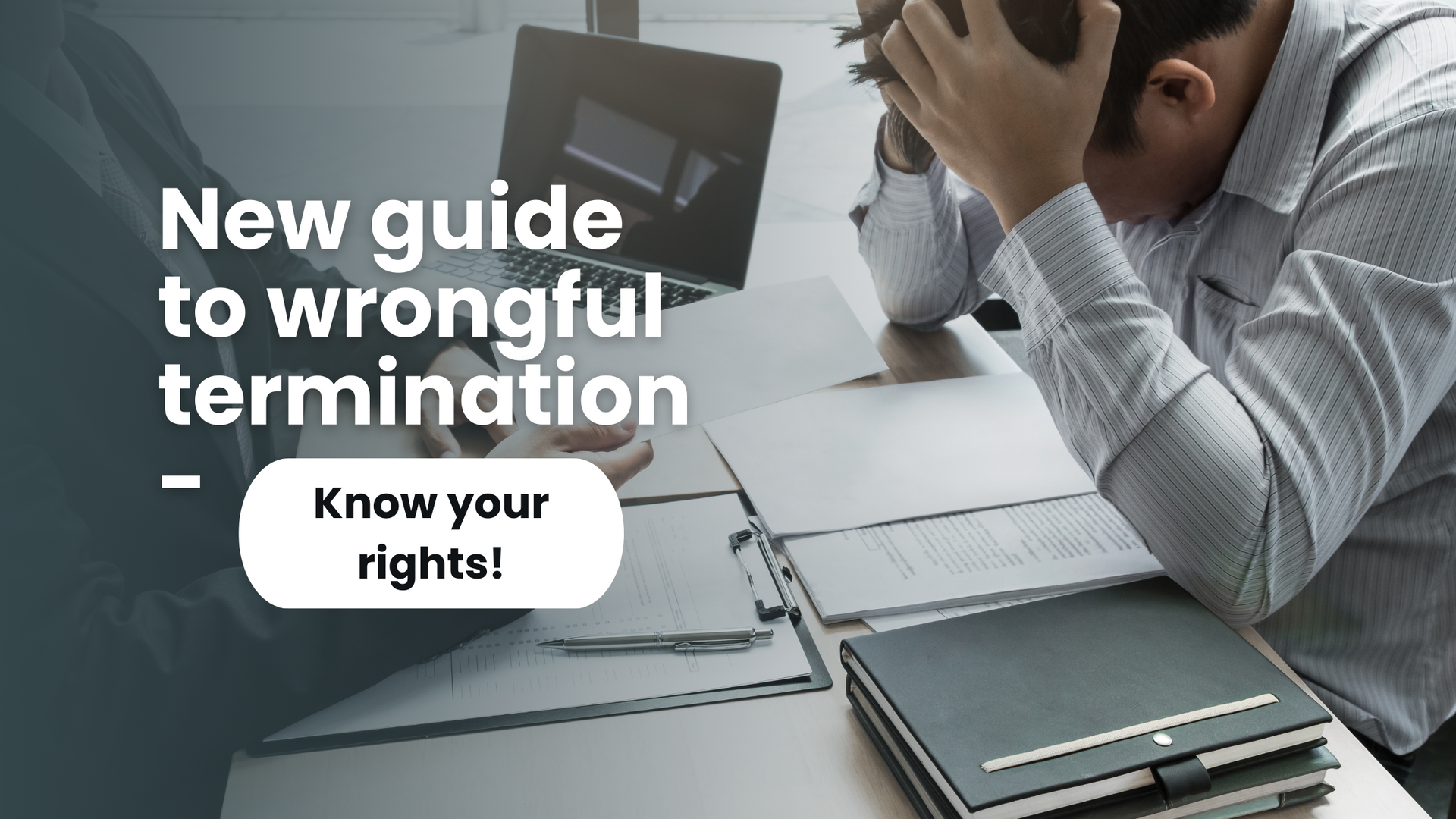New Guide to Wrongful Termination - Know Your Rights
What is Wrongful Termination? Know Your Rights and Steps to Take

Being fired from a job is a life-changing event that can potentially put us at risk. Our work allows us to make ends meet and supply a series of needs for us and those in our care, which is why no one wants to find themselves in the situation of losing a job, especially when we have tried our best to protect it.
However, there are instances when our employment is terminated unfairly, and we need to keep in mind that there are employee protections in place to help people in these situations.
What Is Wrongful Termination?
In the US employment rights are covered by both federal and state laws. California follows a general rule called “at-will employment”, which simply means that, without a contract, either the employer or employee is at liberty to terminate their work relationship at any point and without the need for justification.
There are, nevertheless, some cases where dismissal from a job is classified as Wrongful termination. Wrongful termination happens when your employer fires you for an unlawful reason, as defined by Federal and state laws.
There are some cases where an unlawful discharge can be declared, regardless of federal or state law, which are the following: The employer breaches state or federal laws in the process of terminating employment; or the employer breaches its stated termination policies, whether written verbal; or the employer fosters a hostile work environment that results in constructive termination – wherein the employee is compelled to resign due to intolerable working conditions.
What Constitutes A Wrongful Termination?
Apart from the reasons mentioned above, the most common causes of wrongful discharge are:
- Discrimination: this refers to the firing of an employee for one or several aspects of their identity unrelated to their job performance. This is a broad term and can cover several aspects of the employee's identity, such as race, gender, age, religion, sexual orientation, disability, or other protected characteristics.
- Retaliation: means termination in response to an employee exercising their rights, such as reporting workplace violations, participating in a legal investigation, or taking advantage of protected leaves. The nature of retaliation can form an independent claim against the employer, for example, allegations of discrimination or harassment.
- Whistleblower retaliation: Firing an employee for reporting illegal or unethical activities within the company. California’s Labor Code 1102.5. is the primary law that prohibits employers from retaliating against an employee who reports an employer’s suspected violation of the law to a government or law enforcement agency, a supervisor, or another employee with the authority to address the violation.
- Violation of public policy: Termination that goes against established public policy, such as firing an employee for refusing to engage in illegal activities. An additional scenario would be if an employer prohibits an employee from joining a union and subsequently terminates the individual for becoming a union member despite joining a union is a protected employee right.
- Breach of contract: If there is an employment contract in place that outlines the terms of employment, termination outside the specified conditions may be considered wrongful. Enforcement of these contracts doesn't require a written format. If an employee is terminated wrongfully, the termination itself could be deemed a breach of contract.
What Steps Should I Follow If I Suspect A Wrongful Termination?
Several laws protect employees against unlawful termination and the course of action will vary depending on the cause of termination, which is why it is best to contact a lawyer to review your case to determine a possible path for a lawsuit.
The most important thing to remember is to keep documentation every step of the way, any paper trail that shows the termination was unlawful, such as contracts, performance reviews, detailed records of the events leading up to the termination, including any discriminatory actions, harassment, or violations of employment agreements.
An employment attorney in California can significantly contribute to the collection of evidence for a lawsuit and assist you in discerning which evidence holds significance as the case advances and help you get damages including:
- Reinstatement.
- Back pay for lost wages.
- Front pay for lost future earnings.
- Lost benefits.
- Out-of-pocket expenses (including costs associated with things like medical care or job search).
- Pain and suffering.
- Injunctive relief.
- Attorneys' fees and costs.
- Punitive damages. New Paragraph
Conclusion
Above all, remember the state grants protection for employees in these cases and if you think you have been a victim of wrongful termination or are experiencing an unfair work situation, you have resources.
Consult with LFECR, an experienced employment law firm that can provide guidance, support, and legal representation to help you pursue justice and hold your former employer accountable for their actions. With the right legal counsel, you can navigate the legal process and work towards a fair resolution.
If you or someone you know is seeking support, our experienced labor rights lawyers at Lawyers for Employee and Consumer Rights are here to guide you toward a resolution that upholds your rights and dignity.
Call 844-697-4448 today for a free and confidential consultation to get the help you need and deserve.
Share on Social Media





